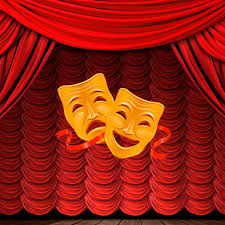Booklet Pane: Haunted Canada, booklet pane (Canada 2016)
Haunted Canada, booklet pane (Canada 2016)
08 September (Canada ) within release Haunted Canada (3rd series) goes into circulation Booklet Pane Haunted Canada, booklet pane face value 10*P No Face Value
| Booklet Pane Haunted Canada, booklet pane in catalogues | |
|---|---|
| Stamp Number: | Sn: CA 2940a |
| Stanley Gibbons: | Sg: CA 3221a |
Booklet Pane is square format.
Booklet pane of 10 self adhesive stamps sold in issue date $8.50Also in the issue Haunted Canada (3rd series):
- Stamp - Bell Island Hag face value P;
- Stamp - Dungarvon Whooper face value P;
- Stamp - Elgin and Winter Garden Theatre face value P;
- Stamp - Lady in White face value P;
- Stamp - Phantom Bell Ringers face value P;
- Booklet Pane - Haunted Canada, booklet pane face value 10*P;
Booklet Pane Haunted Canada, booklet pane it reflects the thematic directions:
An axe (/æks/; sometimes spelled ax in American English; see spelling differences) is an implement that has been used for thousands of years to shape, split, and cut wood, to harvest timber, and as a weapon. The axe has many forms and specialised uses but generally consists of a head with a handle (also called "haft" or "helve")
A hand is a prehensile, multi-fingered organ located at the end of the forearm or forelimb of primates such as humans, chimpanzees, monkeys, and lemurs. A few other vertebrates such as the koala (which has two opposable thumbs on each "hand" and fingerprints remarkably similar to human fingerprints) are often described as having "hands" instead of paws on their front limbs. The raccoon is usually described as having "hands" though opposable thumbs are lacking.
Myth is a genre of folklore consisting primarily of narratives that play a fundamental role in a society. For scholars, this is very different from the vernacular usage of the term "myth" that refers to a belief that is not true. Instead, the veracity of a myth is not a defining criterion
Theatre or theater is a collaborative form of performing art that uses live performers, usually actors or actresses, to present the experience of a real or imagined event before a live audience in a specific place, often a stage. The performers may communicate this experience to the audience through combinations of gesture, speech, song, music, and dance. It is the oldest form of drama, though live theatre has now been joined by modern recorded forms. Elements of art, such as painted scenery and stagecraft such as lighting are used to enhance the physicality, presence and immediacy of the experience. Places, normally buildings, where performances regularly take place are also called "theatres" (or "theaters"), as derived from the Ancient Greek θέατρον (théatron, "a place for viewing"), itself from θεάομαι (theáomai, "to see", "to watch", "to observe").




